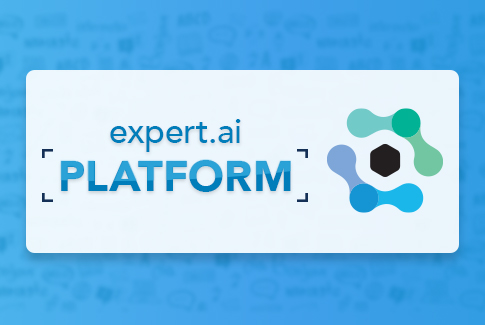
The business of insurance claims can be risky and costly. The ability to manage and mitigate risk can mean the difference between profitability and lost revenue . Yet insurance companies struggle to process high volumes of claims (some of which may be fraudulent) in a way that limits their financial exposure.
Many insurance companies are turning to natural language processing (NLP) and natural language understanding (NLU) solutions to apply structure and understanding to complex language-based documents. Insight from this language data can be used to mine information that can help predict risk while bringing growth opportunities to the surface.
Let’s look at how NLP/NLU streamlines insurance claims process.
Insurance Claims are Risky Business
Insurance companies are constantly seeking ways to manage their risk. They also want to save time, improve accuracy and automate traditionally manual policy review and underwriting. These traditional workflows have become untenable given the time and effort required of domain experts to sift through loads of paperwork to find errors and vulnerabilities. Not only does this make it difficult to assess risk and ensure adequate coverage for customers, but it is prone to mistakes that can lead to high payouts and lost customer confidence in the business.
Insurance companies can lose money to claim errors if they underestimate risk or make policy mistakes. Consider the risks associated with COVID-19 employment practices liability insurance (EPLI) claims. There have already been 2,950 pandemic-related employment claims in the United states, covering disputes that range from remote work to workplace safety and discrimination. Underwriters are looking for ways to mitigate risk by adding restrictions to new or renewed policies and increasing premium rates.
Fraud also has a financial impact. It’s estimated that fraudulent claims total at least $80 billion per year in the United States and that insurers pay out 10% of their claims cost on fraud annually. Property casualty fraud steals more than $30 billion from businesses each year, while auto insurance “premium leakage” is a $29 billion problem. Being able to detect and mitigate mistakes and fraud can prevent financial and operational losses.
Claims Success Starts with Insight
Data and insight from past claims can be used to reduce errors and prevent risk. Hidden within claims is a wealth of information insurance companies can use to optimize outcomes. This insight can be used in the following ways:
- Historical insight. Insurance companies can look at customer data associated with prior claims, credit standing, bankruptcies, criminal records, and statistically high insurance payments over time.
- Predictive insight: Insurance companies can use predictive analytics to identify low-risk and high-risk policies with the highest revenue potential versus payouts or loss due to fraud .
- Actionable insight: Insurance companies can adjust premiums based on risk analysis and allocate more resources to prevent errors and fraud.
Not All Data is Good
Finding insight isn’t an easy task. Claims processing involves documents, emails, images and PDFs along with medical reports, claims policies, risk analysis reports, and contracts. These unstructured documents can’t be read accurately by machines, which is why 85 -90% of insurance documents require manual effort to extract, validate and structure.
Actionable data is hard to extract from unstructured documents. Making things more difficult is the quality of data. Not all data contains information; not all information contains knowledge; and not all knowledge is actionable. Insurance companies need to extract information that points to trends, problems or inconsistencies.
Extract Knowledge With NLP
NLP processes language data from documents at scale, while NLU enables computers to understand it. Taxonomy and ontology provide context to insurance jargon so computers can decipher it within the context of the document. Once language data is understood, text mining extracts key phrases to find patterns and associations.
This intelligent, automated approach to extracting data from claims can detect future risk, identify fraud signals, speed up processing, and improve outcomes by increasing premiums for high-risk policies or reducing them for low-risk customers to win more business.
Improve Outcomes With Hybrid AI
Insurance companies looking for a competitive advantage are easing their way into NLP with end-to-end platforms that streamline the process. As an NLP/NLU software suite, expert.ai turns data into knowledge through a deep understanding of insurance language. Expert.ai ensures accuracy with hybrid NLU by applying two types of AI, which help reduce potentially harmful biases when analyzing consumer claims.
The use of expert.ai for claims processing has been shown to reduce underwriting leakage by more than $39MM and deliver 200,000 more hours for policy review capacity. It has also been used to increase the accuracy of a policy review by 95%.
For insurance agencies seeking to limit their exposure, platforms like expert.ai can drive more accurate and objective underwriting while reducing risk. This approach transforms manual, slow, and error-prone workflows into automated, AI-driven claims processing with more predictable outcomes. With platforms like expert.ai to streamline NLP and NLU, it’s easy to understand how NLP/NLU can streamline the insurance claims process.


